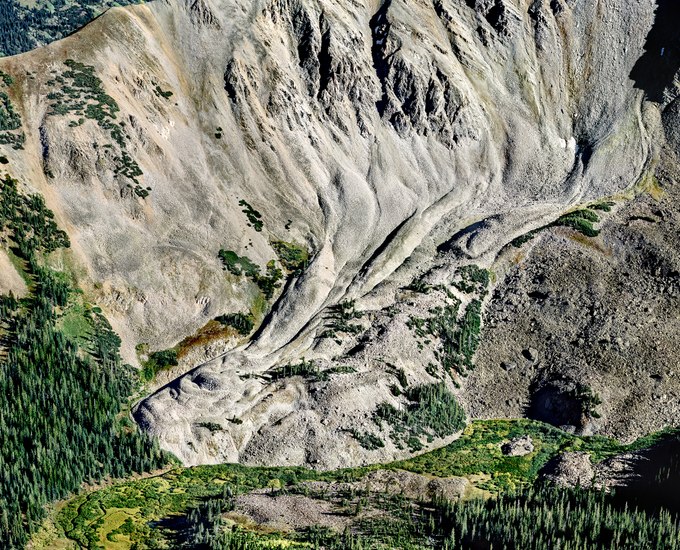When I first saw this rock glacier from the valley floor, it looked like a scree slope, flat and stationary. Further up the trail, as I photographed this scene from above, I realized its appearance was much different, exhibiting the same shape and sense of movement as an ice glacier. However, unlike the smooth exterior of ice glaciers, its furrowed surface resembled pale, desiccated skin.
Rock glaciers form in a manner similar to ice glaciers; both result from gravity carrying ice – or, in this case, rocks intermingled with ice – down from mountain peaks and ridges. Sometimes, rock glaciers form from the path of a melted ice glacier, later covered by stones and boulders. Almost always, their ribbed and wrinkled surface is the product of rocks that have become 'glued' to one another by ice moving downhill together.
Fed by rockfalls off the cliffs along its upper reaches, this mile-long formation in central Colorado's Elk Mountain Range is composed of granodiorite that advances a few inches to two feet per year. Though conifers growing on its lower arms helped stabilize part of this glacier, as I hiked its edge, I quickly understood it was too treacherous to traverse, its sharp, angular rocks precariously perched in place.
- James Baker

